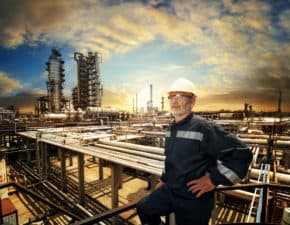The rally in crude over the last month has sparked considerable hope in the energy patch that the worst is now over and that the bottom for crude is in. Nonetheless, while industry fundamentals don’t support significantly higher prices in the short term, there are two crucial signs that there will be a marked rise in oil prices by the end of the decade.
Now what?
Firstly, there are insufficient sources of new oil supplies coming online to meet long-term growth in global energy demand.
It is estimated by analysts that oil needs to reach US$65 per barrel before exploration recommences. With it now remaining under US$50 per barrel, energy consultancy Wood Mackenzie Ltd. has forecast that oil companies will have deferred US$380 billion in projects for 2016. Investment in Canada’s energy patch is expected to experience its biggest drop in 70 years in 2016, falling by 70% in comparison with 2014.
It is this sharp decline in investment which is creating the next oil supply shock.
You see, production from oil fields declines over time and eventually falls to the point where they are no longer economic to operate. This means that oil companies need to invest in finding and developing new oil fields in order to sustain production.
However, the collapse in oil prices has forced companies, from small upstream producers to integrated global majors, to slash investments as they struggle to shore up balance sheets and preserve cash flows. The world’s largest publicly traded oil company Exxon Mobil Corporation (NYSE:XOM) slashed its 2016 spending on upstream operations by 38% compared with 2015.
Whereas Canada’s largest energy company Suncor Inc. (TSX:SU)(NYSE:SU) cut its investment in its upstream operations by 44%, and Crescent Point Energy Corp.’s (TSX:CPG)(NYSE:CPG) capital spending is down by 39%.
Reduced spending on exploration and development activities is not only restricted to privately owned companies, it is also occurring among government-controlled corporations as oil-dependent economies experience massive revenue shortfalls.
This lack of spending, according to the IEA, is accelerating decline rates and will see global production fall by around seven million barrels daily over the course of 2016 and 2017. The end result will be a supply shortage by the end of the decade with global demand for crude projected to grow by 4% over that period.
Secondly, the price of crude remains below the breakeven price for many OPEC members, and the Saudis’ desire to keep boosting production is causing considerable discord.
After all many OPEC members are suffering from considerable revenue shortfalls and are unable to balance their budgets. This is creating considerable internal pressure for the cartel to take action and lift prices, which the Saudis are refusing to do.
Nonetheless, even the Saudis are suffering substantially because the Kingdom requires US$106 per barrel to balance its budget. Over the last year, it has lost more than 17% of its foreign currency reserves as it has battled to fill the revenue shortfall left by lower crude. This has even led to conjecture that the Kingdom may go bankrupt before its policy of keeping oil prices low in order to boost market share has any real effect.
Its financial desperation is becoming apparent; it has cut budget and is seeking to publicly list 5% of national oil company Aramco in order to generate additional revenue (which could be as much as US$106 billion).
This now sees considerable financial pressure, both at home and in the cartel, that may force the Saudis to alter their strategy and take actions to boost oil prices.
So what?
While crude may not appreciate considerably over the short term, there are signs that there will be growing supply pressures over the long term. These in conjunction with financial pressures in OPEC will see a notable reduction in supply and higher prices by the end of decade as global energy demand continues to grow.






